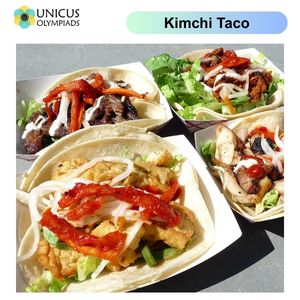

Fusion food is a culinary style that combines elements from different culinary traditions and cultures, creating new and innovative dishes that merge flavors, techniques, and ingredients from diverse parts of the world. The rise of fusion food reflects the growing global interconnectedness and cultural exchange, where chefs creatively blend various cooking methods, spices, and ingredients to offer novel eating experiences. Fusion food has gained immense popularity in recent years, offering exciting alternatives to traditional dishes while also challenging established culinary norms. In this article, we explore the concept of fusion food, how it blends cultures, and some of the most iconic examples of fusion cuisine that have emerged in recent decades.
Fusion food refers to dishes that combine ingredients, cooking styles, and traditions from two or more different culinary cultures. These dishes aim to create something new by merging the best of various food traditions. The concept of fusion cuisine has existed in some form for centuries, but it gained significant popularity in the late 20th century as globalization and cultural exchange accelerated. Fusion food can be found in restaurants worldwide, with chefs using creativity to break the rules of traditional cuisine by combining unexpected elements to create unique and flavorful dishes.
The origins of fusion cuisine can be traced back to the centuries-old exchanges of food and cooking techniques that occurred as people traveled, traded, and colonized different regions. However, modern fusion cuisine as we know it began to gain prominence in the 1970s and 1980s, particularly in cosmopolitan cities like New York, Los Angeles, London, and Tokyo, where diverse cultures collided, and there was a growing interest in experimenting with different culinary traditions.
Fusion food merges diverse cultural influences, creating culinary experiences that bridge different traditions. The blending of cultures in food allows for the exploration of new tastes, textures, and cooking techniques, ultimately expanding the palate and challenging diners to embrace diversity. Fusion cuisine encourages the idea that food can be a reflection of global interconnectedness and collaboration, allowing chefs to experiment with cross-cultural influences in a creative and meaningful way.
One of the most visible ways fusion food blends cultures is through the combination of ingredients from different culinary traditions. Chefs often combine spices, herbs, and produce from different parts of the world to create unique and unexpected flavor combinations. This type of cross-cultural experimentation is at the heart of fusion cuisine.
Fusion food also involves blending different cooking techniques and preparation methods from various culinary traditions. This blending can involve using traditional methods from one culture while incorporating ingredients or flavors from another. Chefs use this approach to create dishes that are both familiar and surprising, offering an entirely new culinary experience.
Fusion food also serves as a vehicle for cultural exchange, allowing different culinary traditions to intersect and influence each other. As globalization continues to bring people from different parts of the world together, fusion cuisine has become an accessible way for people to explore and experience cultures beyond their own. It represents the blending of ideas, flavors, and techniques from different corners of the world, leading to exciting new culinary possibilities.
Fusion cuisine has created several iconic dishes that have become staples in restaurants around the world. These dishes represent the creative blending of diverse culinary traditions and showcase how different cultures can come together through food to create something entirely new and exciting.
The sushi burrito is a perfect example of fusion food, blending Japanese sushi with Mexican burrito-style wraps. It features traditional sushi ingredients like rice, fish, and vegetables but is wrapped in a tortilla or seaweed. This dish represents the seamless combination of two distinct culinary traditions, offering a familiar yet innovative dining experience.

The cronut, created by French pastry chef Dominique Ansel, is a hybrid of a croissant and a doughnut. It is made by deep-frying croissant dough to create a pastry that has the flakiness of a croissant and the shape of a doughnut. The cronut quickly became a viral sensation, illustrating how blending two beloved pastries can create something entirely new and exciting.

The kimchi taco is an excellent example of Korean-Mexican fusion cuisine. It combines the traditional Mexican taco with kimchi, a staple of Korean cuisine. The result is a bold, spicy taco that marries the flavors of fermented vegetables with the fresh ingredients typically found in Mexican cuisine.

Fusion cuisine has become more than just a culinary trend; it reflects the broader phenomenon of globalization, where cultures, traditions, and influences blend in a natural and often beautiful way. The spread of fusion food globally has allowed people to experience different flavors, ingredients, and cooking techniques without leaving their local communities. It has also fostered greater appreciation for diverse cuisines, encouraging a cross-cultural exchange that benefits both chefs and diners alike.